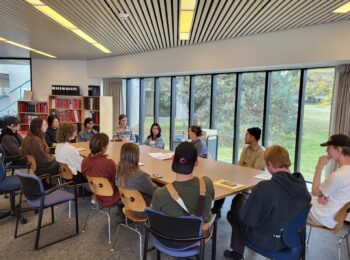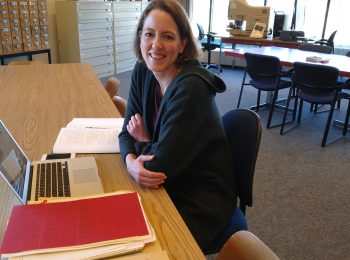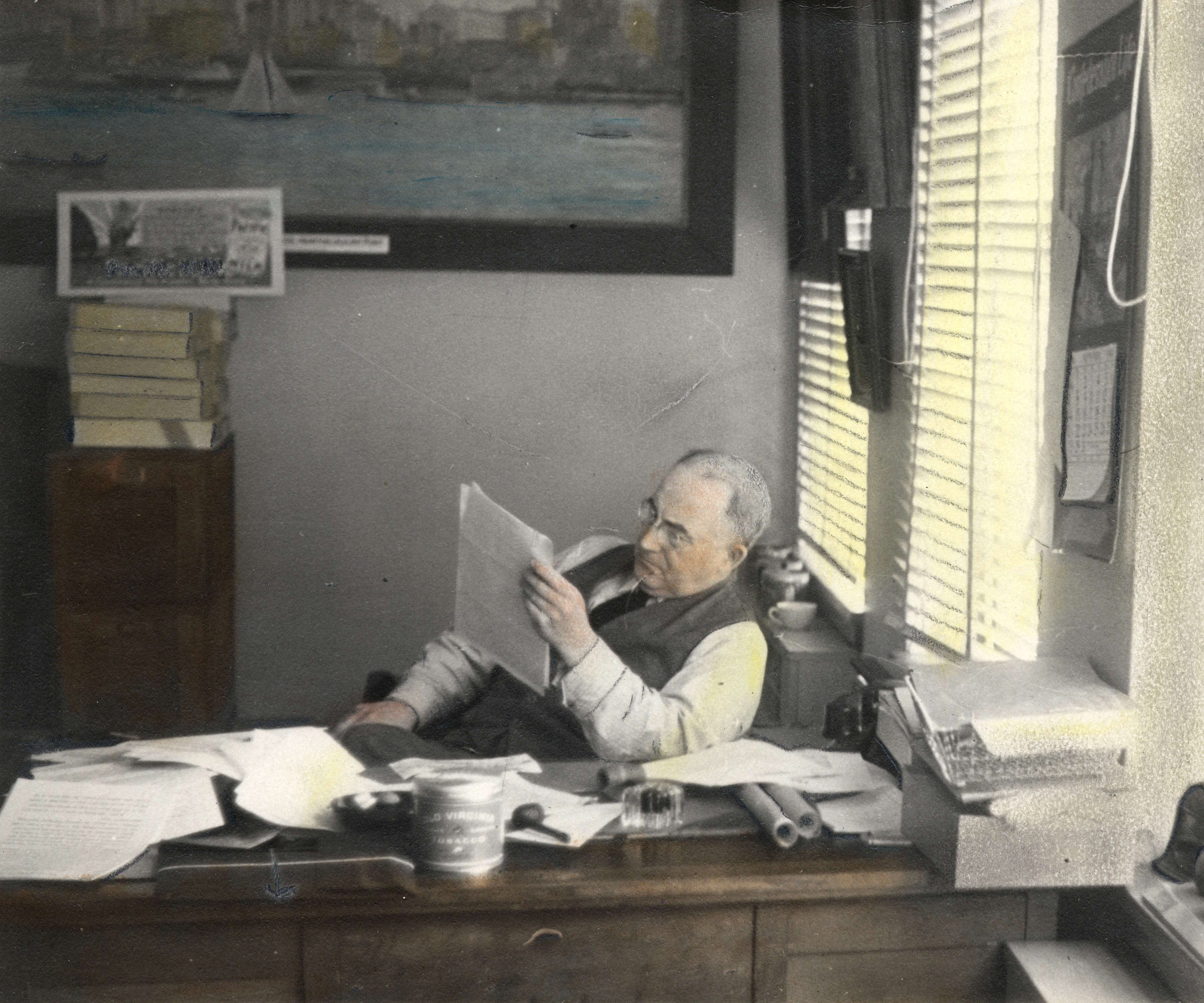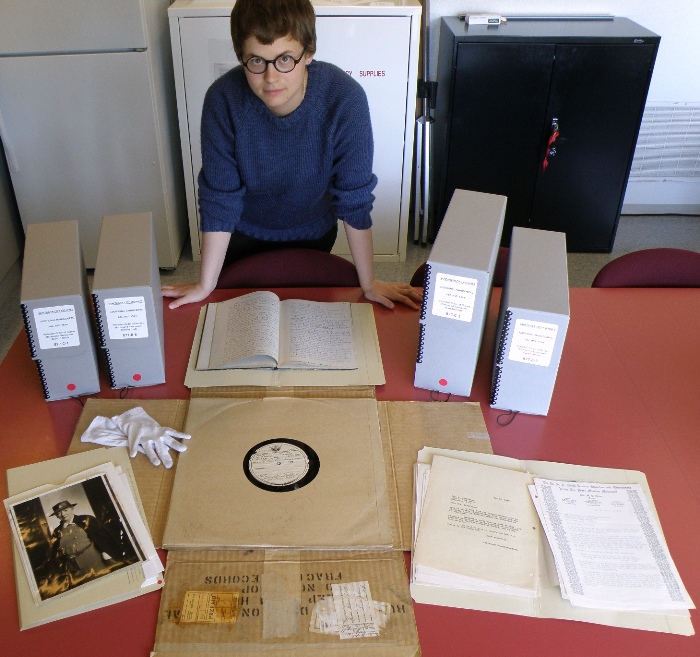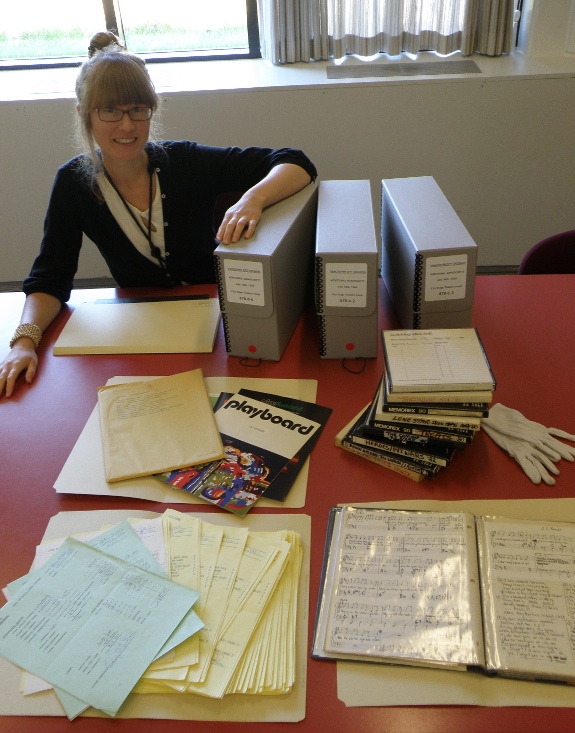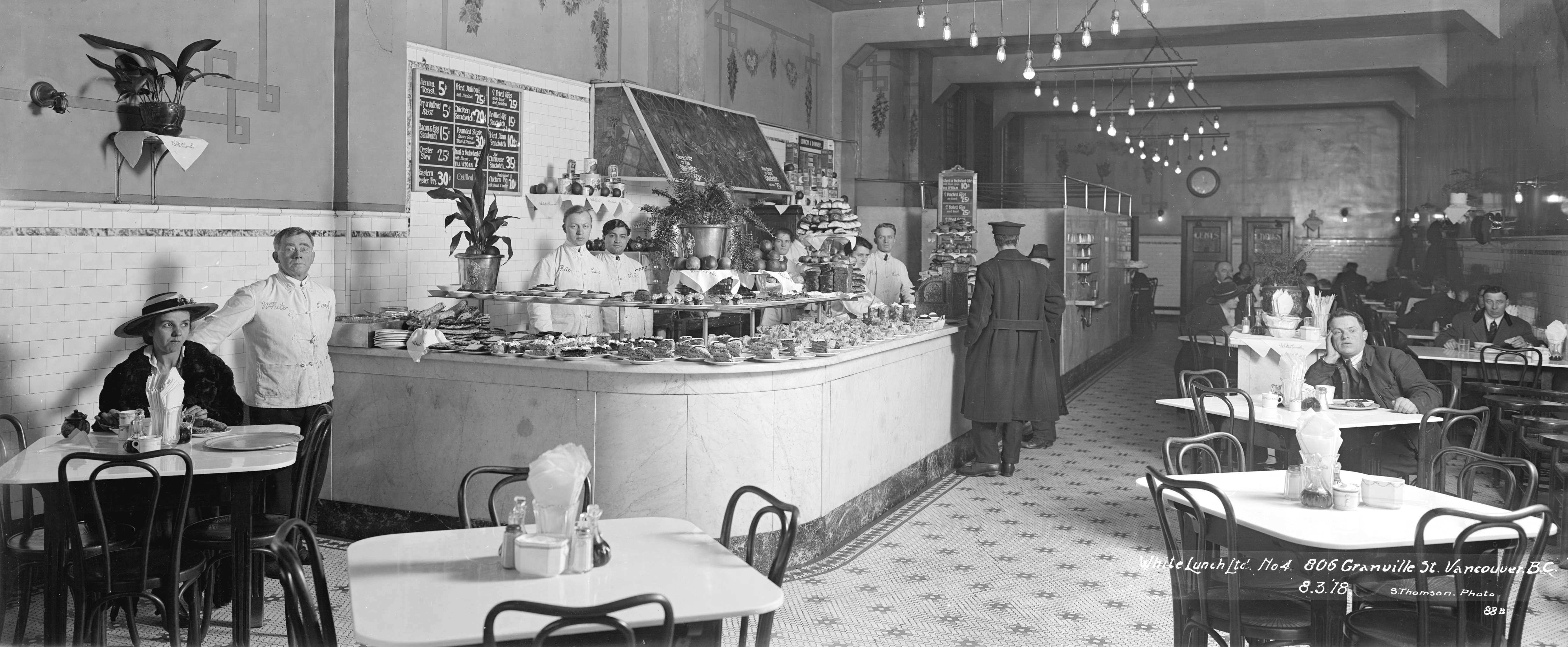As a student in the Master of Library and Information Studies degree at UBC, I never thought that I would get the chance to work in an archives, so when the opportunity came up I jumped at the chance. My professional experience project at the Archives was to catalogue the preservation and conservation collection that was housed in the Archives lab. Although it may not seem obvious, the Archives has a small library of books and journals, which is used by archives patrons in the reading room and by Archives staff. The collection includes items that are of interest to people studying the history of Vancouver and the local industry and culture as well as professional materials for both the archival and preservation staff. It was my pleasure to work with this fascinating collection of books and serials.
![Books on the shelf with Library of Congress bookmarks ready for labeling. Photo by Allison Hasselfield.]](https://www.vancouverarchives.ca/wp-content/uploads/2013/01/Hasselfield_BlogPost-009.jpg)
In the beginning, my days of cataloguing at the Archives began with a stack of books. My job was to find catalogue records for these books in other libraries, and copy the information that I found into the Archives database. The copy-cataloguing process may seem a bit mundane, but in reality there was always a rogue element that made things interesting. The books themselves, for one, touched on fascinating subjects. There were general books about preserving books, art and archival materials; books about bookbinding and making paper; books about photographic processing, digital printing, and scanning; and books about methods for pest-control, to name just a few.
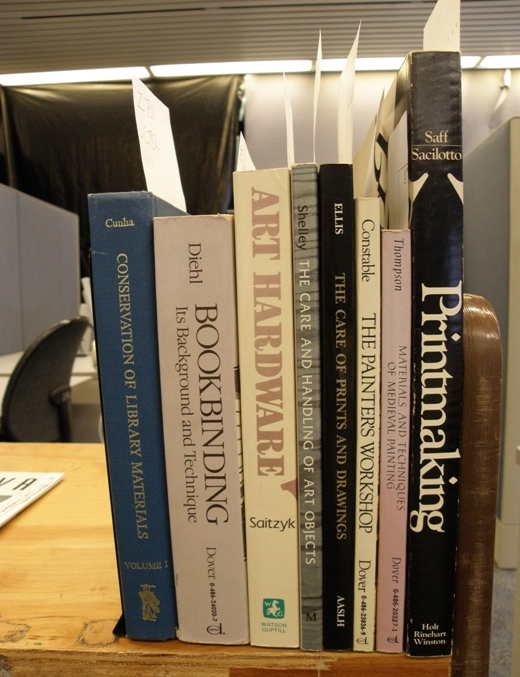
Beyond the interesting subject matter, there were often situations where I discovered slight variations and errors in other catalogue records, and remedying these appealed to my detail-oriented mind. The cataloguing process began to feel a bit like detective work (or at least an investigative process), and being involved in decisions about what to include in a catalogue record made it all the more engaging for me. I had to consider what the Archives’ needs were in a catalogue record. This sometimes meant being more concise when choosing subject terms and more verbose when describing the uniqueness of the inscribed copy in hand.
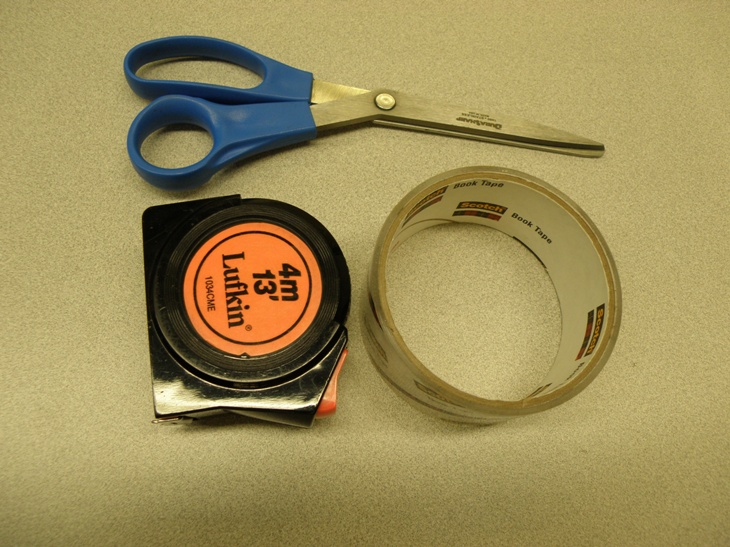
Once the (close to 200) books had been catalogued in the Archives database, I labeled them with the proper Library of Congress call number, secured the labels with book tape, and put them in their proper place on the shelf. I used book tape since it will hold labels in place but not damage the books if the tape is removed. Putting books on the shelf was the final step of restoring order to the physical universe, and it gave me a very librarian-ish sense of pride and purpose.
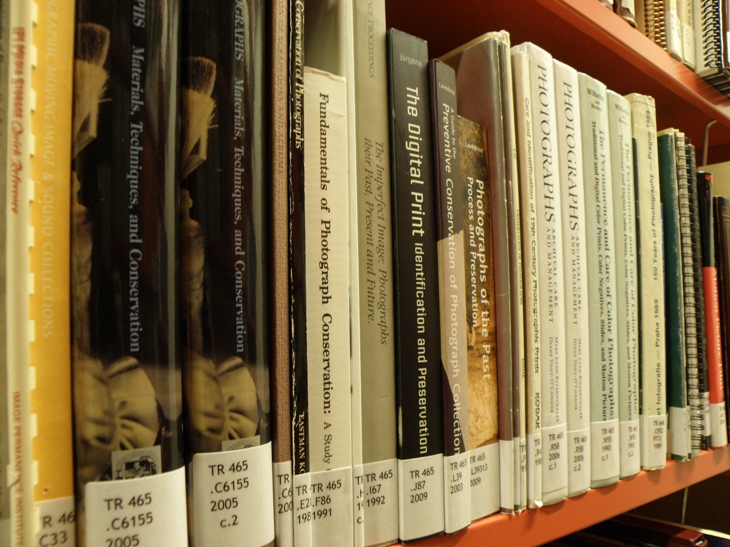
The next task for my professional experience was to catalogue the serials in the library collection.
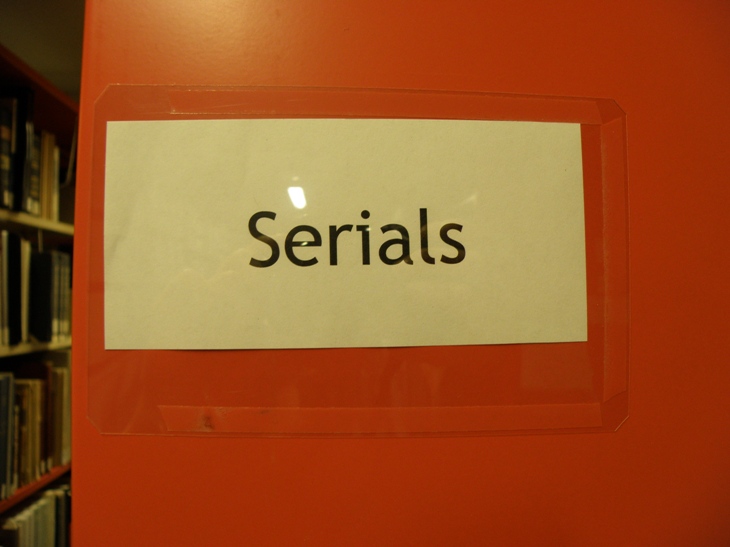
When I got to the Archives, all of the serials were shelved together in three bays at the end of the library collection. Although a few of them were in the database, most of them were not, and the journal titles were not organized by Library of Congress call numbers. Additionally, some of them still had labels from the days when the Archives library was organized according to the Dewey Decimal System. Most of the serials had no labels at all.
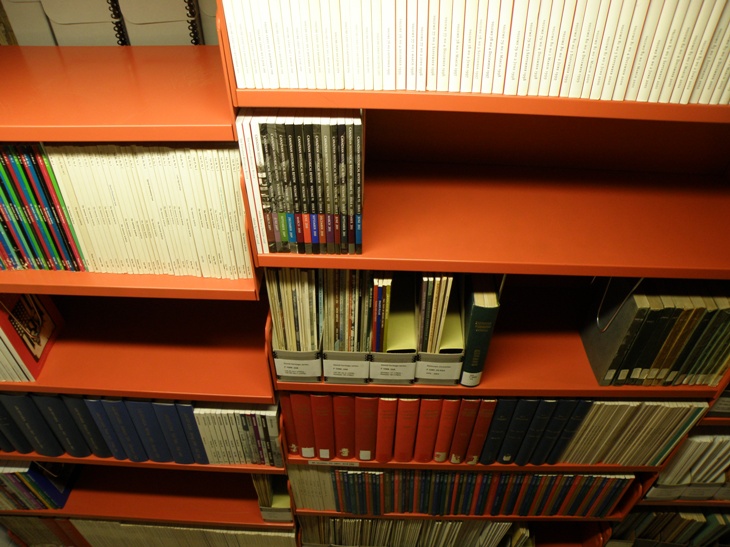
Cataloguing the serials in the database was a painstaking process, since each record included a high level of detail about the library holdings. It involved a lot of counting (and re-counting), paying meticulous attention to which issues the Archives had and which were missing, and formulating detailed (but coherent) notes in the catalogue record. This challenge appealed to me greatly.
Overall the most satisfying part of my experience at the Archives was when all the serials were catalogued, and I set about putting them on the shelf in order of call number. This shelf shift involved physically moving shelves around in order to accommodate serials of different heights, placing the serials optimally, and then stepping back to admire my own handiwork.
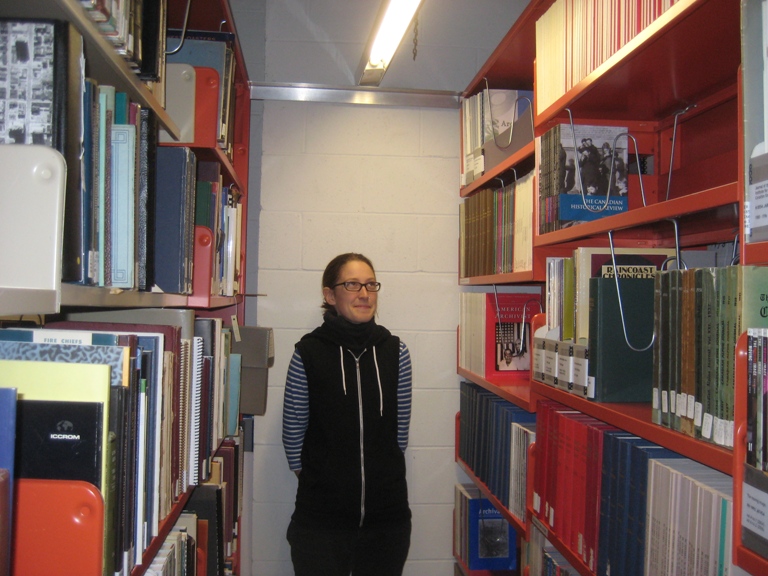
Working at the Archives was a unique experience for me as a library student, because I got to see the kinds of fascinating archival work that is done there. I was also fortunate to work on a project that both related to my aspirations as a future librarian and prepared me for taking advanced Cataloguing and Classification this term. I’m happy to say that I contributed to cleaning up the library collection, making more resources accessible to Archives staff and patrons. I really enjoyed working on this project and I hope that it is not the last time that I get to see the inner workings of an archival organization.


